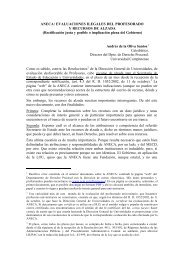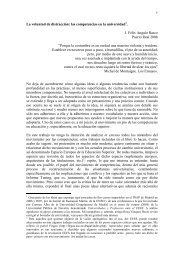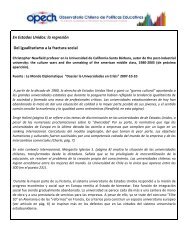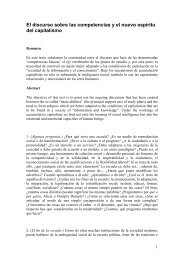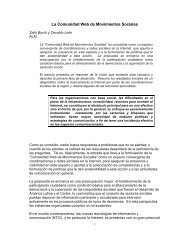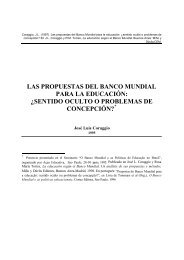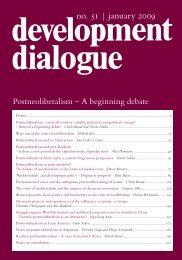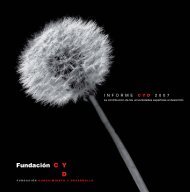Lifting the Burden: Law Student Debt as a Barrier to Public Service
Lifting the Burden: Law Student Debt as a Barrier to Public Service
Lifting the Burden: Law Student Debt as a Barrier to Public Service
Create successful ePaper yourself
Turn your PDF publications into a flip-book with our unique Google optimized e-Paper software.
Ms. Median Takes <strong>the</strong> Job with <strong>the</strong> Prosecu<strong>to</strong>r but Elects<strong>to</strong> Repay Loan under Federal Income-Contingent Repayment OptionSalary <strong>as</strong> a Prosecu<strong>to</strong>r: $40,000State and Federal Income Taxes and Payroll Taxes $10,293Annual Loan Payments on Income-Contingent Repayment Option $ 6,000Total of Taxes and Loan Payments $16,293Discretionary Income for All Living Expenses $23,707Ms. Median’s Loan Payments <strong>as</strong> a Percent of Her After-Tax Income: 20.00%23Assume that Ms. Median selects <strong>the</strong> 20-year payment option and begins work in <strong>the</strong>prosecu<strong>to</strong>r’s office. She does fine work and finds it stimulating and satisfying.None<strong>the</strong>less, even after choosing <strong>the</strong> extended payment plan, she feels burdened by <strong>the</strong>$750 monthly loan payments. They represent 30% of her take-home pay. She h<strong>as</strong>disposable income after taxes and her loan payments of $20,707, but if she spends$650 in rent (sharing an apartment with a roommate), $125 for utilities and telephone,$250 in car payments and ano<strong>the</strong>r $250 per month for au<strong>to</strong> insurance, g<strong>as</strong> and repairs,$300 per month for groceries and $75 per month for lunches at work and meals noteaten at home, she will consume nearly all of her disposable income. She will havealmost nothing left over <strong>to</strong> buy clo<strong>the</strong>s, furnish her apartment, pay for medicalexpenses, take a vacation, or put any money <strong>as</strong>ide for retirement. The cramped livingstandard she faces is not short term. If she stays in government work and her incomeincre<strong>as</strong>es only at <strong>the</strong> rate of <strong>the</strong> cost of living, she will live at this standard for <strong>the</strong>remaining 18 years of payment on her loan.By her third year of work for <strong>the</strong> prosecu<strong>to</strong>r, Ms. Median’s salary h<strong>as</strong> incre<strong>as</strong>ed <strong>to</strong>$43,000 and she h<strong>as</strong> developed highly valuable experience <strong>as</strong> a trial lawyer for <strong>the</strong>county. Her boss, <strong>the</strong> county prosecu<strong>to</strong>r, would like very much <strong>to</strong> keep her.Recruiting and training new staff is costly and time-consuming. Ms. Median wouldlike <strong>to</strong> stay. Ms. Median knows, however, that her cl<strong>as</strong>smates, who began at <strong>the</strong> localfirms at $80,000, are now, in <strong>the</strong>ir third year, earning an average of $95,000. A localfirm, <strong>the</strong> same firm that made her <strong>the</strong> initial offer of $80,000, now offers her $95,000<strong>to</strong> join <strong>the</strong>m <strong>as</strong> a third-year <strong>as</strong>sociate. Ms. Median can no longer resist. Reluctantly,she accepts <strong>the</strong> job in <strong>the</strong> firm.<strong>Lifting</strong> <strong>the</strong> <strong>Burden</strong>:The Problem and Its SolutionsA HIGH PROPORTION OF LAW GRADUATES TODAY FACE EVEN GREATERBARRIERS TO TAKING PUBLIC SERVICE JOBSThe fictional Ms. Median is <strong>the</strong> median law student – median borrower <strong>as</strong> anundergraduate, median borrower <strong>as</strong> a law student, median earner in her job <strong>as</strong> aprosecu<strong>to</strong>r. By definition, almost exactly half of all law students who borrowed <strong>to</strong>attend law school have borrowed more than Ms. Median. Consider <strong>the</strong> ranges ofborrowing that are occurring <strong>to</strong>day at American law schools. Almost 87% of all lawstudents borrow funds <strong>to</strong> attend law school, with 81% borrowing federal funds. 26 Atle<strong>as</strong>t a third of all law students also take out private loans (not including loans fromfamily members). 2726NCES Report at 113.27Id.



